A belt sander is an essential tool for anyone looking to work on large wood surfaces quickly and effectively. It’s a powerful power tool that operates with an oscillating sanding belt, designed to grind down wood, metal, plastic, and other materials. Belt sanders come in various sizes and shapes, ranging from small handhelds to larger bench-mounted units.
What is a belt sander?
A belt sander is a great tool to have for anyone looking to take on big woodworking projects. It is designed with an oscillating sanding belt which runs along two drums, one at the rear and one at the front of the machine. The sanding belt is tensioned between the two drums and as it rotates, it sands down the material placed between them.
Belt sanders come in a variety of sizes and shapes, ranging from small handheld versions to larger bench-mounted models. They usually have adjustable speed and tension settings so that you can get the best results for your particular project. [1]
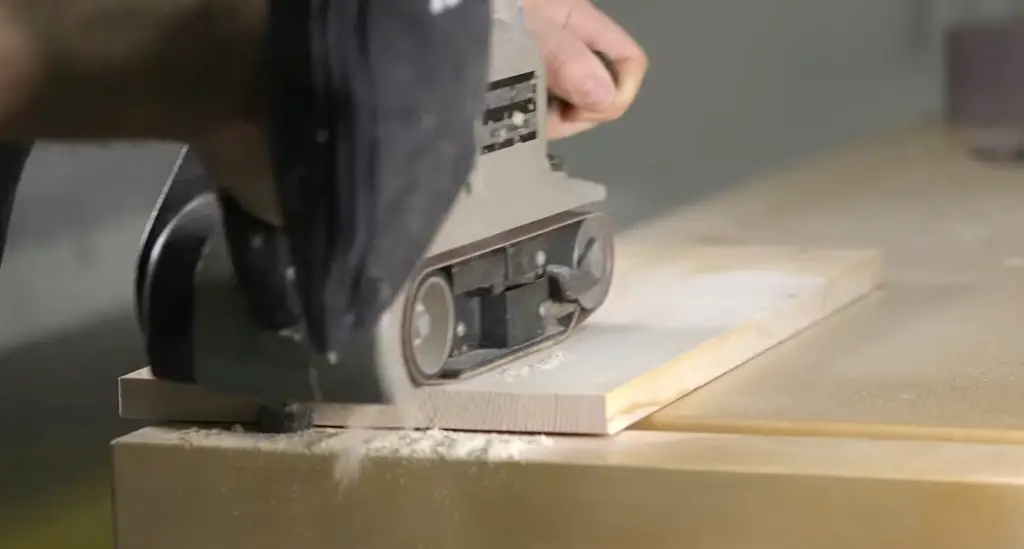
Parts of a Belt Sander
A belt sander is composed of two parts: the motor and the sanding belt. The motor provides power to move the sanding belt around, while the belt itself does the actual job of smoothing out wood and other materials.
The motor can be powered by either an electrical outlet or a battery, depending on what type of sander you have. Some models even come with a variable speed setting, allowing you to adjust the speed according to what job you’re working on.
How to Use a Belt Sander
Select the Sandpaper
The first step when using a belt sander is to select the right sandpaper. You’ll want to match the type of paper you need for your particular job. Abrasive belts come in various grits and can range from very coarse (for aggressive removal of material) to very fine (for finishing work). [2]
Prepare the Work Area and Material
Before you begin, make sure that the area is free of any debris and clean up any mess. If working with wood, you’ll want to use a scrap piece or an old piece of plywood as a platform for sanding. This will help protect your work surface from scratches and abrasions. [2]
Start Sanding
Once you’ve chosen the right sandpaper and prepared the work area, it’s time to begin sanding. Start by placing the belt sander on top of the material in a stationary position. Then, slowly move the belt sander back and forth over the surface. Keep an even pressure as you go, so that the abrasive material doesn’t gouge or scratch the surface. [2]
Strip or Sand the Material
the type of job, you may want to strip or sand down the material. If stripping, use a coarse-grit abrasive and move the sander in one direction. If sanding, use a finer-grit paper and move the sander back and forth across the surface. [2]
Clean Up
When your sanding is complete, make sure you take the time to clean up the dust and debris created by the belt sander. This will help keep your work area clean and safe for future projects.
Using a belt sander can be a great way to quickly and efficiently remove material or smooth surfaces. However, it’s important to remember that these tools can be very powerful and should only be used with the correct safety precautions in place. Properly selecting the right sandpaper, preparing the work area and material, and cleaning up after use will help ensure you get great results with your belt sander every time. [2]
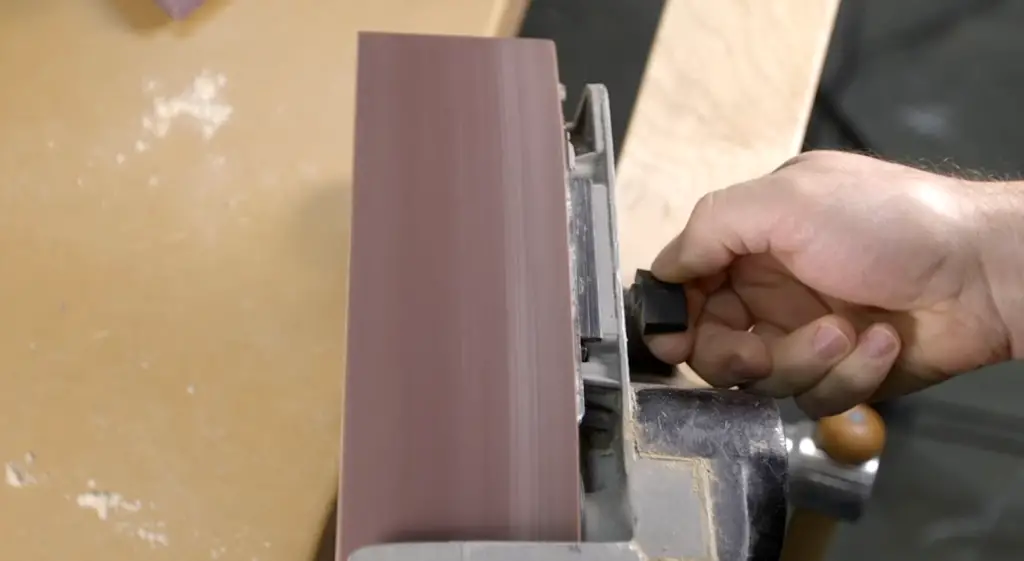
What are belt sanders used for
Sanding large and flat surfaces
Belt sanders are typically used to sand large flat surfaces like decks, floors, and door frames. They can also be used to shape objects such as spindles or dowel rods. When using a belt sander, the abrasive belt is moved rapidly in order to quickly remove material from the surface being worked on. The motion of the belt is usually horizontal, but can also be vertical or angled.
A belt sander consists of two rollers that are either driven by an electric motor or a compressed air motor. The abrasive belt wraps around both rollers and as the belt moves it removes material from the surface being worked on. [3]
Smoothing rough cuts
Belt sanders are great for quickly smoothing rough cuts. This is because the abrasive belt is more aggressive than other types of sanders, so it removes material from surfaces quickly and evenly.
When using a belt sander to smooth rough cuts, you should start with the coarsest grit abrasive that will work and then move up to finer grits for final smoothing.
Refinishing furniture
Belt sanders are also useful for refinishing furniture. They can be used to quickly remove old finishes, such as paint or varnish, and prepare the surface for a new finish. When refinishing furniture with a belt sander it is important to always use light pressure to avoid damaging the wood.
It is also important to start with the coarsest grit abrasive that will work for the particular project and move up to finer grits as needed. After sanding, you should use a vacuum or brush to remove any dust from the surface before refinishing it. [3]
Repainting cabinets
Belt sanders can also be used to quickly prepare cabinets for painting or staining. They are great for removing old finishes and smoothing out rough edges before applying a new finish.
When repainting or staining cabinets with a belt sander, again it is important to start with the coarsest grit that will work for the particular project and move up to finer grits as needed. After sanding, you should use a vacuum or brush to remove any dust from the surface before applying paint or stain. [3]
Removing stains and sun damage
Belt sanders can also be used to remove stains and sun damage from wood surfaces. They are great for quickly removing discolorations caused by water or heat, as well as paint or varnish that has become chipped or worn away.
When using a belt sander to remove these blemishes, you should start with the coarsest grit necessary and move up to finer grits as needed. It is also important to always use light pressure to avoid damaging the wood. After sanding, you should use a vacuum or brush to remove any dust from the surface before refinishing it.
Overall, belt sanders are great tools for quickly sanding large and flat surfaces, smoothing rough cuts, refinishing furniture, repainting cabinets, and removing stains and sun damage from wood. [3]
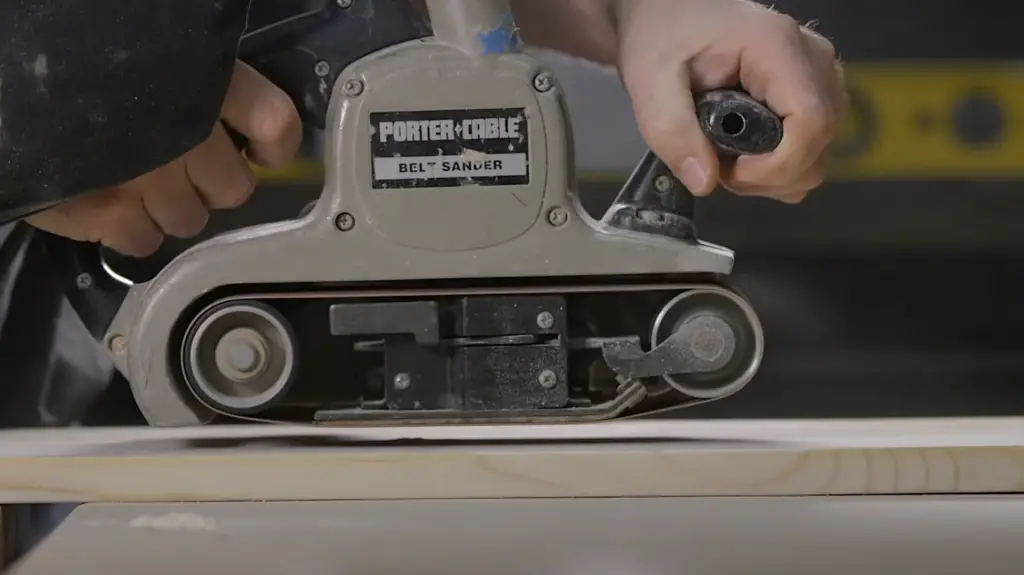
Rust and paint removal
Belt sanders can also be used to quickly and easily remove rust and paint from metal surfaces. The abrasive belt is highly effective at removing rust, paint, and other coatings without damaging the underlying surface.
When using a belt sander for rust or paint removal, you should start with the coarsest grit necessary and move up to finer grits as needed. Always use light pressure when sanding, as pressing too hard can cause damage to the surface being worked on. After sanding, you should use a vacuum or brush to remove any dust from the surface before refinishing it. [3]
Refinishing decks
A belt sander is a powerful tool for quickly refinishing decks, doors, furniture, and other surfaces. It removes layers of paint or varnish in no time at all, making it ideal for larger projects that would take forever to do by hand. A belt sander is also great for sanding down rough spots on wood or metal surfaces, smoothing them out for a more even finish.
It’s important to take care when using a belt sander so that you don’t damage the surface you’re working on. Always start with the coarsest grit of sandpaper and gradually move up to finer grits as necessary. Start at a low speed and adjust to a higher speed if needed. And above all, be sure not to press down too hard or you risk removing more material than intended! [3]
Smoothing concrete
Belt sanders can also be used to smooth out concrete surfaces. First, you’ll need to attach a diamond grinding bit to the sander and then you’re ready to go! Start with the coarsest grit and move up to finer grits as necessary. Make sure not to press down too hard or else you risk creating grooves and dips in your concrete surface. Once you’ve finished smoothing, it’s important to clean the area to remove any dust and debris. [3]
Why use a belt sander?
A belt sander is great for sanding large areas quickly and efficiently. It’s best used for removing material when preparing surfaces for finishing or refinishing, like wood furniture, drywall, concrete, and metal. Using a belt sander can save you time and effort compared to using traditional hand sanders as the job will be done faster.
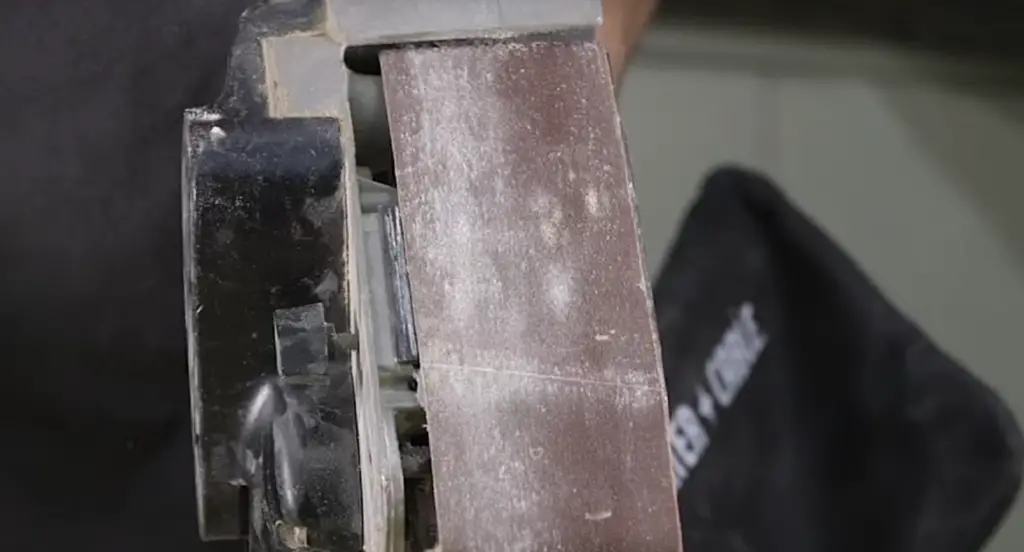
Its wide belt is also great for making sure the surface you are working on is even and smooth. It helps to create a consistent finish all over the surface, which makes it easier to apply paint or varnish after sanding. The powerful motor of a belt sander can also help make sure you get better results in less time. [1]
When to Replace Your Sandpaper?
The life of the sandpaper on your belt sander will depend on its type and how often you use it. Generally speaking, if you use it for woodworking projects, most standard sandpapers last between 10-20 hours before needing to be replaced. For harder materials such as metal and stone, you may need to replace them after 5-10 hours of use.
It’s important to be vigilant when it comes to your sandpaper – if you continue using a worn out belt, it can cause damage to the surface being worked on and may even break down the belt sander itself. [1]
Belt Sander Tips
Whenever using a belt sander, it is important to follow all safety protocols to avoid potential injury. Here are some additional tips for getting the most out of your belt sander:
- Wear protective gear such as goggles, dust masks, and aprons to protect yourself from flying debris.
- Make sure your work area is well-lit and that the sander is firmly anchored.
- Use a vacuum to remove dust from the work area while sanding. This will make the job much easier.
- Make sure you use the correct grit of sandpaper for your project. A finer grit will produce smoother results, while a coarser grit is better for heavy duty sanding.
- Make sure to use a slow and steady motion when moving the sander over your project. A fast, jerky motion can cause damage or uneven results.
- When working with wood, try to keep the sander parallel to the grain of the wood; this will give you the smoothest results.
- Always sand with the grain as going against it may cause splintering or gouging of the wood.
- If you need to sand off a lot of material quickly, use a coarser grit and move more slowly. This will help to avoid over-sanding and damaging your workpiece. [1]
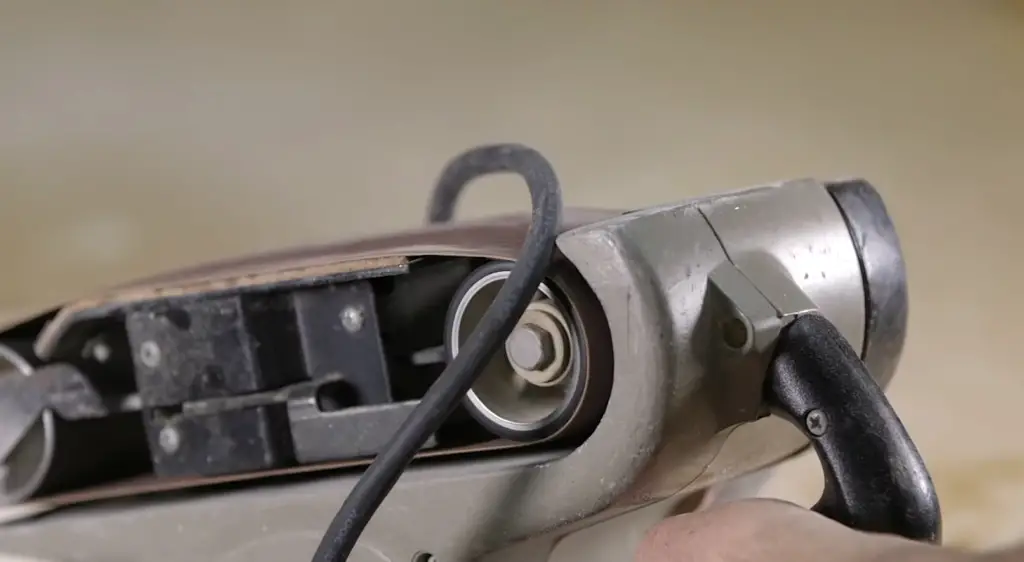
FAQ
What is the difference between a sander and a belt sander?
Sanders can use various types of abrasive paper, cloth, or discs. A belt sander is a type of sander that uses belts instead of paper or discs. Belt sanders are generally larger than other types of sanders and have a belt that moves back-and-forth across the material being sanded.
What is the definition of belt sander?
A belt sander is a power tool used to smooth and prepare surfaces for painting or finishing by abrading away material. It consists of a motor that rotates an endless loop of sandpaper, which is guided along the surface being worked on. Belt sanders are generally larger than other types of sanders and have a belt that moves back-and-forth across the material being sanded.
Why is it called a belt sander?
Belt sanders are named after the belt of abrasive material that is used to do the sanding. The belt moves back and forth across the surface, removing small amounts of material with each pass. As it does this, the belt wears away and new abrasive material is added to ensure a consistent sanding action.
What is the difference between belt sander and grinder?
The main difference between a belt sander and a grinder is the size of the abrasive material or belt that each tool uses. A grinder typically uses smaller abrasive discs, while a belt sander can use either large or small belts depending on the desired application. Additionally, grinders are usually handheld tools while most belt sanders are stationary tools.
What is the difference between orbital and belt sander?
The main difference between an orbital and a belt sander is the motion that each tool uses. An orbital sander vibrates in small circles, while a belt sander moves back and forth in a straight line. Additionally, an orbital sander usually has a smaller sanding surface than a belt sander.
Do I really need a belt sander?
Belt sanders are a great tool to have for larger projects that require a lot of material removal. They can be used on wood, metal, and plastic surfaces and are great for quickly removing paint or finish from furniture or other items. Additionally, belt sanders are great for producing a smooth surface prior to painting or staining.
Which type of sander is best?
The type of sander that is best for a particular project depends on several factors, including the material being worked on and the desired end result. Generally speaking, orbital sanders are great for producing fine finishes on wood, while belt sanders work well for removing material quickly. Additionally, there are specialty sanders available that are designed to work on specific materials, such as metal or plastic.
Can you use a belt sander to remove paint?
Yes, a belt sander can be used to remove paint from wood and other surfaces. However, it is important to use the right type of belt for the particular job and to follow all safety guidelines when working with power tools. Additionally, it is generally best to start with a coarse grit belt and then move up to finer grits as the paint begins to come off. This will help ensure a smooth finish.
Useful Video: Portable Belt sanders | Beginner Tools
Conclusion
A belt sander is an invaluable tool for a variety of projects, from sanding down furniture to removing paint. It’s important to choose the right type and size of sander for your needs, and it’s also essential to wear proper safety gear while using one. With the right care and maintenance, you can enjoy many years of use from your belt sander. Whether you’re a professional or a DIY enthusiast, owning and using a belt sander can help make many of your projects easier and more efficient. Hopefully this article has given you the information to help you choose the right type of belt sander for your needs. Happy sanding!
References
- https://engineerwarehouse.com/blogs/everything-you-need-to-know/what-are-belt-sanders-used-for
- https://www.thespruce.com/how-to-use-a-belt-sander-5225262
- https://topwoodworkingadvice.com/what-is-a-belt-sander-used-for/






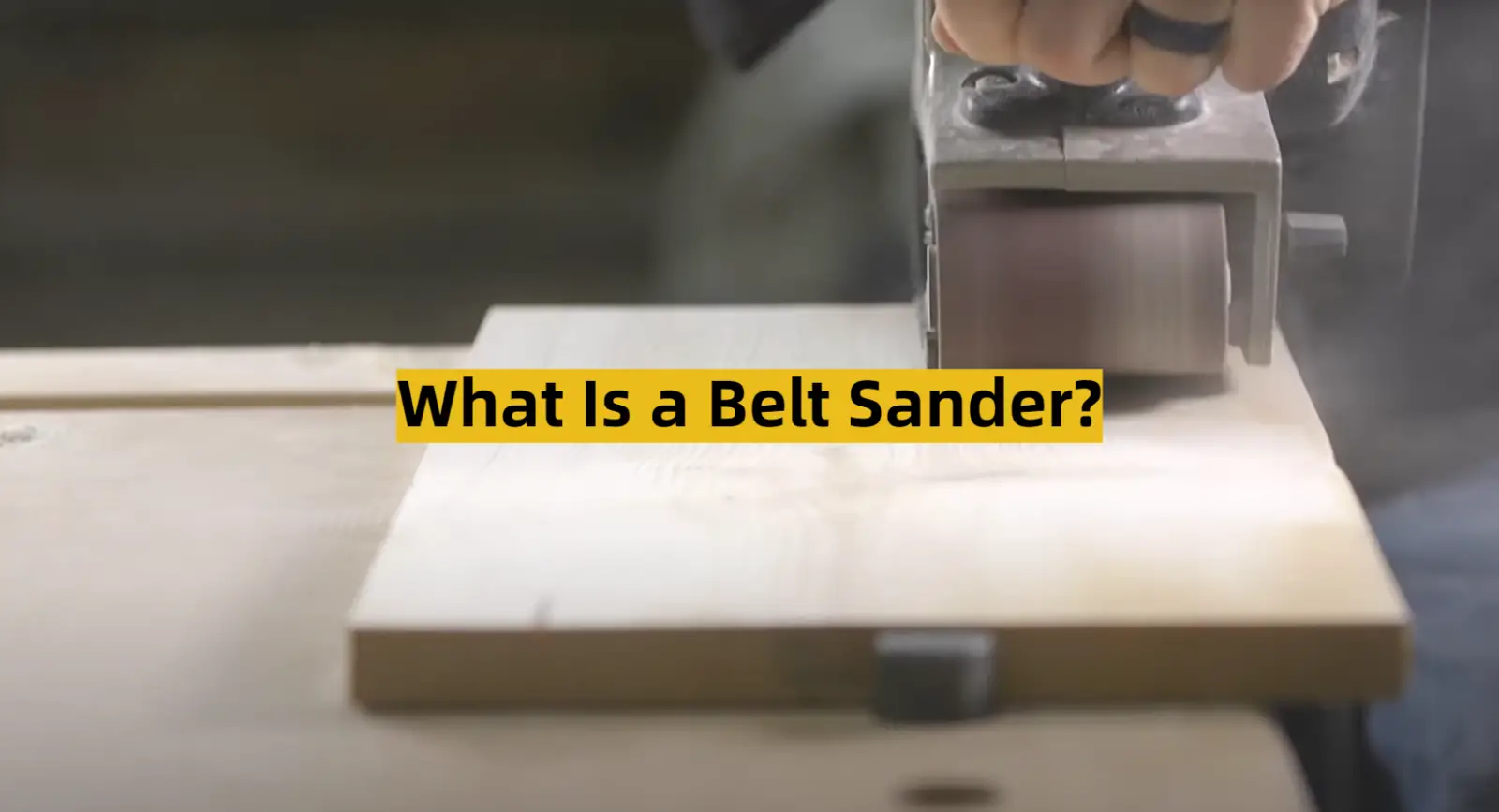




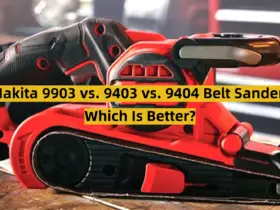

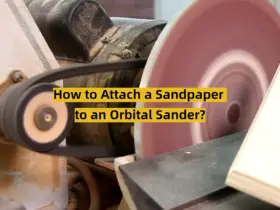
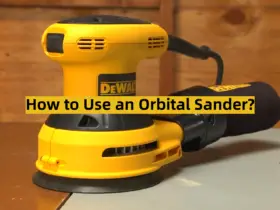
Leave a Reply